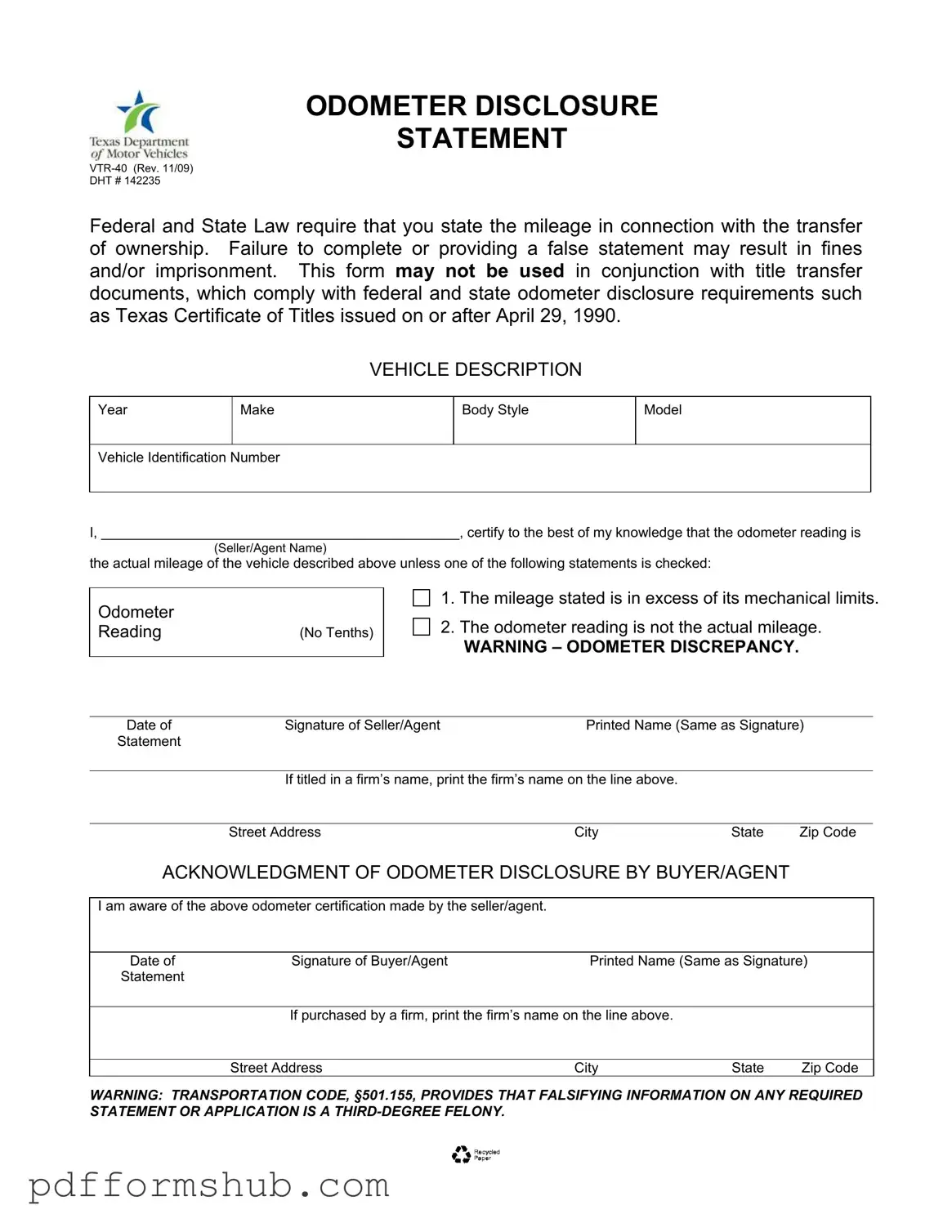When buying or selling a vehicle in Texas, the Odometer Disclosure Statement, also known as Form VTR-40, plays a crucial role in the transaction. This form is designed to ensure that both parties are aware of the vehicle's mileage at the time of ownership transfer. It is important to note that federal and state laws mandate the accurate reporting of this information. Failure to complete the form correctly or providing false information can lead to serious consequences, including fines or imprisonment. The form requires essential details such as the vehicle's year, make, model, body style, and Vehicle Identification Number (VIN). Additionally, the seller must certify the accuracy of the odometer reading, acknowledging that it reflects the actual mileage unless specific exceptions apply. Buyers also need to acknowledge the odometer certification made by the seller, ensuring transparency in the transaction. This document cannot be used alongside title transfer documents that meet federal and state odometer disclosure requirements, particularly for titles issued on or after April 29, 1990. Understanding the importance of the Texas Odometer Statement is vital for anyone involved in a vehicle sale or purchase.
